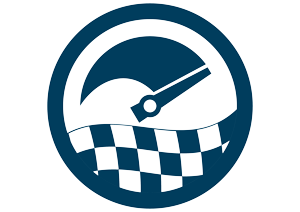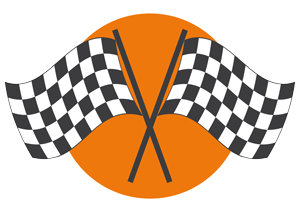-
MenuBack
-
COLLECTIONS
-
-
24h00 Le Mans
-
Alpine A110 1600S
-
Lancia 037
-
-
-
FULL KIT
-
-
FULL KIT
-
-
- ACCESSORIES
- Australian
- MAQMADON
-
Assembly guides
-
-
Blog Ixo
-
- FAQ
Porsche 908 Coupé
Porsche 908 Coupé
World champion
The Porsche 908, launched in 1968, was the successor to the 907 and was quickly overshadowed by the 917, but it proved to be a formidable contender in endurance races.

The rear of Herrmann and Larrousse's 908 LH, 2nd in the 1969 Le Mans 24 Hours, features two movable fins on each side of the main wing.© IXO Collections SAS - Tous droits réservés. Crédits photo © Porsche / D.R.
In October 1967, the Sporting Commission of the Fédération Internationale Automobile decided to change the regulations governing the World Championship for Makes with effect from the 1969 season. This involved reducing the maximum displacement of the Sports-Prototypes category to 3 litres and that of the Sport category to 5 litres, with the obligation to build at least 25 units of the latter. The aim of the sporting authorities was to halt the domination of Ford and Ferrari that had been developing for several seasons. The engineers at the Porsche Research and Development Centre in Weissach, having received information about the new regulations, didn't wait for them to be officially published in July 1967 and began to work on them.

The No. 23 Porsche 908 of Udo Schutz and Gehrard Mitter was running in 3rd position when they withdrew in the 14th hour of the 1969 Le Mans 24 Hours. © IXO Collections SAS - Tous droits réservés. Crédits photo © Porsche / D.R.
In the tradition of the 907
A vast project was launched by the racing department at the initiative of Ferdinand Piëch, Ferdinand Porsche's grandson and Ferry's nephew, who recently took over the management of the company. Porsche's design department accomplished its mission swiftly and successfully, with the new 908 narrowly missing out on victory in the Le Mans 24 Hours in 1969. Above all, the 908 enabled Porsche to win the World Constructors' Championship for the first time that year. Once again, with the 908, the engineers at Zuffenhausen demonstrated their ability to work quickly on a new car by adopting the technical solutions tested in racing on earlier models. Porsche's latest model, first tested at Hockenheim in the winter of 1967, had a well-proven tubular steel chassis, initially with a short K-type body (for Kurz Heck). The car was fitted with 15-inch wheels, allowing the adoption of more efficient disc brakes. The tubular frame of chassis no. 908-12 was made of aluminium, making it 20 kilos lighter.

Seen from the side, the sleek lines of the Porsche 908, shown here in the short-chassis version, reflect those of the 917, a model that would dominate the market in the early 1970s. © IXO Collections SAS - Tous droits réservés. Crédits photo © Porsche / D.R.
Meticulous aerodynamics
In preparation for the Le Mans 24 Hours, a long LH (Long Tail) body was developed using the wind tunnel. At the rear end of the bodywork is a spoiler consisting of two movable vanes linked directly by connecting rods to the 908's rear suspension. So, at high speed, the spoiler will remain a single blade, whereas in a bend, when the car eases off on the inside of the bend, the corresponding mini spoiler rises, while the other remains flat, which provides more downforce and quicker passage. As for the engine, the internal architecture of the previous 2,195 cm3 type 771 8-cylinder flat engine made it easy to adapt to the new displacement requirements. However, improvements were made to strengthen the valves, sodium-cooled, and the connecting rods, now in titanium. The gearbox in the previous 907 could not withstand the power of the 3-litre engine, so it was initially planned to use the 6-speed gearbox from the Bergspyder, but its heavy weight persuaded the Porsche engineers to create a special 5-speed transmission.

The Spyder version played a major role in the success of the Porsche 908, as in this case at the 1970 24 Hours of Le Mans, where Rudi Lins and Helmut Marko took 3rd place and the Performance Index. © IXO Collections SAS - Tous droits réservés. Crédits photo © Porsche / D.R.
A Spyder version
The Porsche 908 was developed into a two-seater Spyder version, Type 908-02, a year after its launch. This model, with a chassis identical to that of the Coupé, was designed for slower circuits requiring greater agility, while the closed bodies, and particularly the extended LH versions, were entered in races where the track allowed higher speeds, such as the 24 Hours of Le Mans or Daytona. The first-generation 908
Spyder had a similar wheelbase to the Coupé, but was just 400 cm longer. The engine and transmission remained unchanged. By the end of the 1969 season, Porsche's racing department was concentrating its resources on the new 917, while the factory began to sell a large number of its 908 models to private teams. Demand for these cars was so high that a number of reserve chassis and Coupé bodywork were modified into Spyders. Around twenty 908s continued to compete in international races until the end of the 1970s. For a long time, they performed well, such as the long-tailed 908/03 driven by Reinhold Joest, Jürgen Barth and Marion Casoni, which came 4th in the general classification of the 1975 Le Mans 24 Hours.

Technical data
Porsche 908-01 Coupé LH (1968)
• Engine: Type 908, 8 flat cylinders, central rear engine, longitudinal
• Displacement: 2,997 cm3
• Bore x stroke: 85 mm x 66 mm
• Power: 350 bhp at 8,400 rpm
• Fuel: Bosch mechanical fuel injection
• Ignition: Bosch electronic
• Timing: 2 overhead camshafts per bank, 2 valves per cylinder
• Transmission: Type 907-6, rear wheel drive, 5 gears + M.A.
• Tyres: 15" x 9.5" (front), 15" x 14.5" (rear)
• Brakes: ventilated discs (front and rear)
• Length: 483.9 cm
• Width: 172 cm
• Height: 93 cm
• Wheelbase: 230 cm
• Front track: 148.6 cm
• Rear track: 145.4 cm
• Weight (empty): 680 kg
• Maximum speed: 320 km/h

One step away from victory
Having secured second place with a private Porsche 907/8 after numerous withdrawals and 5 laps behind the winner in 1968, the Porsche System Engineering factory team announced its claim to victory with the new 917 the following year. Leading the race from the 4th hour, the N°12 917 LH of the Elford-Attwood team dropped out at the 21st hour. The N°64 908, driven by Hans Herrmann and Gérard Larrousse, then took over from the N°12 Porsche in an attempt to win the race. During the last two hours, this Porsche and the Ford GT 40 no. 6 driven by Ickx and Oliver, who were in the lead, were involved in a duel that would be remembered in the annals of the Le Mans event. During the very last laps of the race, Hans Herrmann and Jacky Ickx, who never got further than 2"5 apart, passed each other several times in the same lap, putting on an extraordinary show. In the end, it was Ickx who took the win on the last curve before the finish line, just 120 metres ahead of his rival!
Articles récents
Share this post





 Français
Français Anglais
Anglais Allemand
Allemand Espagnol
Espagnol Italien
Italien Portugal
Portugal


